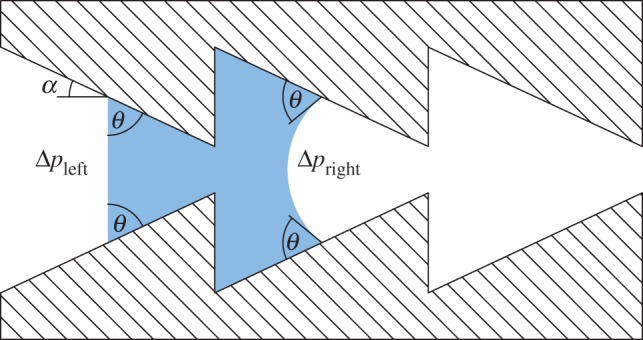Figure 4.

Saw-tooth-shaped horizontal capillary channel with an infinite depth in top view. Each curvature of the liquid–air interface in longitudinal direction is determined by the tilt angle α of the capillary side walls and the contact angle θ within the capillary. Pressure differences Δp across the liquid surface result from these curvatures. A concave curvature (Δp > 0) causes the liquid front to advance, whereas a convex curvature (Δp < 0) causes the liquid front to recede. Here, the left meniscus illustrates a special case where Δp = 0. (Online version in colour.)
